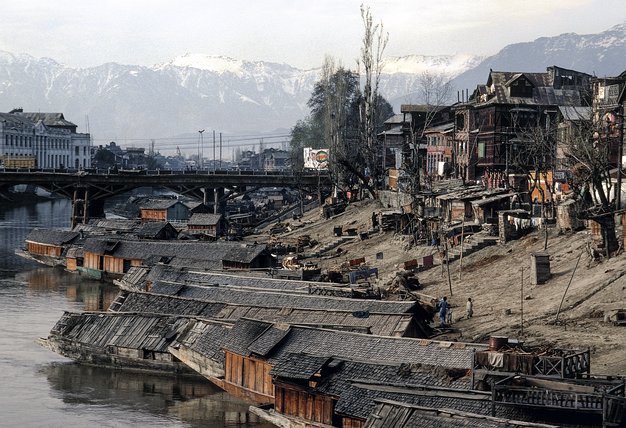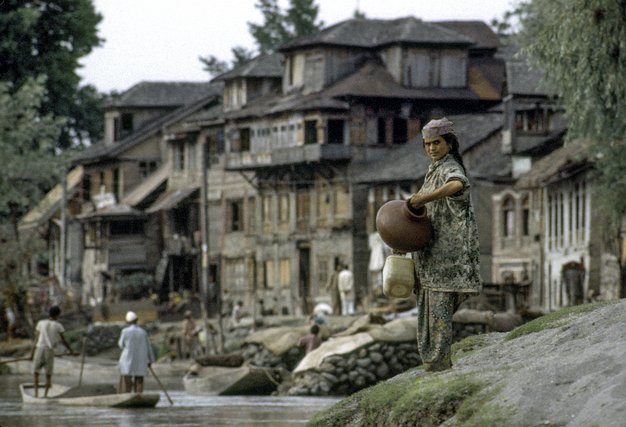The Vale of Kashmir is an 85 mile elongated bowl surrounded by mountains--the Pir Panjal to the west and south and the Great Himalaya to the north and east. This mile-high valley once held a great lake filled by a vast glacial system.Today the remining waters are found in Wular, Dal, Nageen, Anchar Manasbal, and other smaller lakes. The once great glaciers, whose snouts abutted the valley, have retreated to their present redoubts. The effects of global warming and catastrophic over-population can only hasten this environment's decline. If there is any doubt, look at these photographs (taken between 1970 and 1990) and the go and see for yourself what the intervening years have wrought.
The Vale was once the center of a much larger kingdom whose borders stretched in Gilit to the west to the fronties of China. In its totality, it offered perhaps one of the most spectacular and diversebio-environments on Earth, carefully (or selfishly) husbanded by its autocratic rulers. With the advent of indepence in 1947, the environmental and cultural unity of the region was trajically shattered by religious secterianism--divided by conflict with part to Muslim Pakistan and part to Hindu-dominated India. Since the majority of Kashmiris were, and still are Muslim, problems arose, only exacerbated by the desirability of the land.
On first arrival, the foreign tourist may believe the principal occupation of the Kasmiris is tourism. This is of course not the case as most earn their living from the land--land that has always been jealously guarded with laws against outsider ownership. This gave rise in the late 19th Century to the building of houseboats by visitors from the British Raj. Now owned by Kashmiris, they have become requisite for modern travelers. Yet while providing a romantic retreat, they have also beome a serious threat to the lakes which they occupy.
Much has been writen of the Vale, its beauty, the "Switzerlan of Asia", or "Shangri La". When I first arrived over a half-century ago after a grueling nine month road trip from Europe, I would have heartily seconded these descriptions. After months of the harshest and driest landscapes, I agreed with the Moghul emperor, Jehangir, who when asked on his death bed for his fina wish, replied "Only Kashmir". In my mind it was "heaven".
Since that time, the many visits and their experiences have tempered that view. Yet though no longer mesmerized by the Vale, it remains, despite its problems, a place of great beauty and fascination. It is a place impossible for the outsider to become part of, but where you must be content to float through. I can only hope that this "ferang" (foreigner) was able to capture a bit of its allure.




KASHMIR VALE